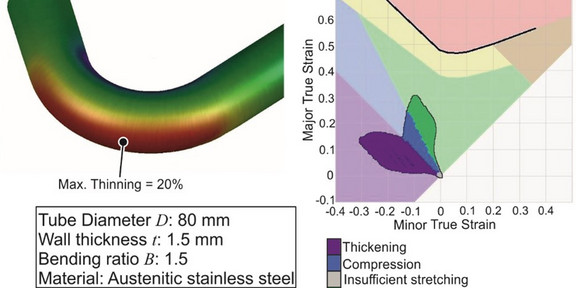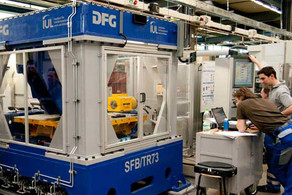Prediction of Wall Thinning during Rotary Draw Bending of Tubes
- Profil- und Blechumformung
- RECIMP
- Materialcharakterisierung
- Industrienahe Forschung

| Funding | ReCIMP |
| Contact | Manish Chowdary Ghattamaneni M. Sc. |
Austenitic stainless steel shows good formability, but its production leaves a CO2 footprint about twice as high as the one of ferritic stainless steel grades. Therefore, a substitution of the steel grade enables a significant reduction of CO2 emissions in rotary draw bending. Within this project experimental and numerical investigations are performed to analyze the wall thinning behavior of both materials (see Figure a). Moreover, strain paths are investigated (see Figure b). The analysis builds the basis for the development of an analytical model that enables the prediction of the wall thinning for a large number of different bending parameters. Based on this model, a process window is to be developed to display all parameter combinations that can be substituted by the resource-efficient ferritic steel grade.







![[Translate to English:] [Translate to English:]](/storages/iul-mb/_processed_/0/f/csm_Forschung1_2880x640_patrick_7b98a9cf47.png)